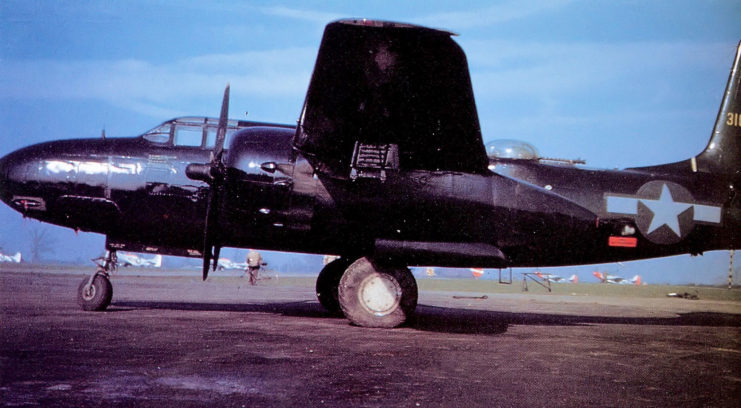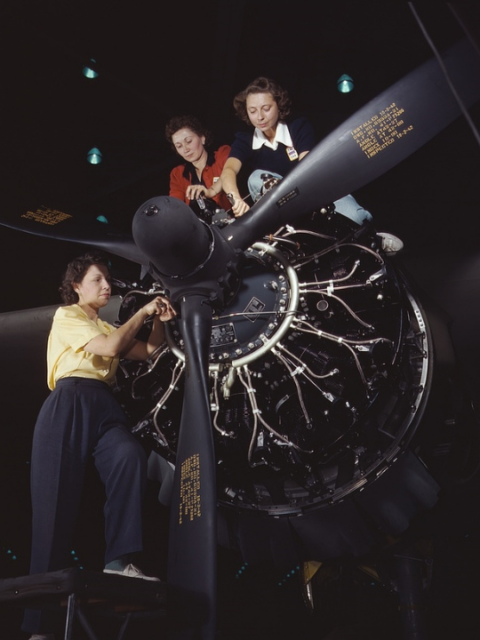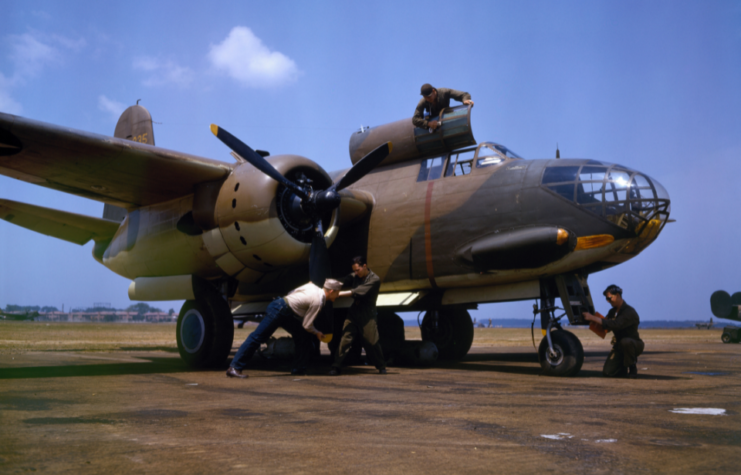I am doing an Historical Planes post, I didn't know a whole lot about the A-20, she seemed to get short shrift compared to the B26 and the B25.
During WWII, every aircraft in America’s roster of medium bombers was excellent. These were the B-26 Marauder, the B-25 Mitchell, and the A-20 Havoc. The latter was overshadowed by the more famous B-25 and B-26, but was no less capable, and in some ways was better than these aircraft. For an early war aircraft of this size, the Havoc was fast and agile, earning praise from many pilots who loved its flying characteristics.
The aircraft’s origins date back to the mid-1930s, when a team of talented aircraft designers from Douglas drew up plans for a bomber with a shoulder-mounted wing. Under each wing was to be a 450 horsepower radial engine, which would have given the aircraft rather lackluster performance. The planes involved in the Spanish Civil War proved that this aircraft would not be able to compete with foreign designs and it was canceled.

The following year, in 1937, the United States Army Air Corps (USAAC) sent out a requirement for a new aircraft. It turned out these requirements were similar to Douglas’ 1936 design. Recognizing this, Douglas drew up a similar aircraft, but with 1,100 horsepower engines this time, and named the Model 7B. The 7B first flew on 26 October 1938.
At this phase of development, it was competing against a few aircraft from other manufacturers, including the North American NA-40, which would later lead into the B-25 Mitchell.
Although the U.S. was not hugely impressed by the aircraft, the French were, after a purchasing committee witnessed it in action. In 1939, the French placed an order for 270 7Bs, which caused Douglas to make some hefty redesigns to perfect the aircraft. The updated aircraft was now powered by two 1,600-1,700 horsepower supercharged or turbosupercharged radial engines and renamed the DB-7.
With these engines, the aircraft was very fast for its size, and now caught the attention of the U.S. They placed an order for the aircraft, which they named the A-20. The British placed an order for DB-7s too.
The aircraft was quick for the day, able to reach a speed of around 320 mph, which was not much less than fighter aircraft at the time. In comparison, the B-25 Mitchell, which first flew two years after the A-20, had a top speed of around 270 mph.
 Women
working on the Wright R-2600 Cyclone 14 engine of a Douglas A-20 Havoc
twin-engine bomber at Douglas Aircraft Company’s plant in Long Beach,
California.
Women
working on the Wright R-2600 Cyclone 14 engine of a Douglas A-20 Havoc
twin-engine bomber at Douglas Aircraft Company’s plant in Long Beach,
California.The A-20G was the most numerous version built, and carried two .50 caliber machine guns and four 20 mm cannons in the nose. After 250 A-20Gs had been made, the four 20 mm cannons were replaced with .50 caliber machine guns. It had a dorsal gunner position with two .50 caliber machine guns and another .50 caliber mounted underneath the aircraft behind the bomb bay.
It carried a crew of three: the pilot, gunner, and bombardier.
Depending on the variant, the A-20 could carry 2,000 pounds of bombs, and it often dropped a large array of different ordnance including torpedoes, bombs, incendiary bombs, and rockets.
 Workers groom lines of transparent noses for A-20 attack bombers.
Workers groom lines of transparent noses for A-20 attack bombers.Many pilots thought the A-20 was an excellent and easy aircraft to fly as it required little effort to throw it around in the sky. As it was controlled by a single person, this let the pilot truly fly the aircraft how they wanted. The A-20 was particularly friendly to novice pilots, unlike the B-26 Marauder that needed to be controlled in a very precise manner during take-offs and landings.
When the aircraft was reviewed by the RAF, a test pilot said it “has no vices and is very easy to take off and land … The aeroplane represents a definite advantage in the design of flying controls … extremely pleasant to fly and manoeuvre.”
Although it was fast and handled great, the A-20 lacked range, which somewhat limited its use throughout the war.

France’s order for the aircraft had hardly been fulfilled when Germany invaded in 1940. A number of their DB-7s participated in the defense of France against the Nazis before they were taken to North Africa to stop them from falling into enemy hands. Some of these were eventually used against the Allies by the Vichy government.
France’s undelivered DB-7s were diverted to Britain after France fell, and they were absorbed into the RAF. The A-20’s biggest user by far was the Soviet Union, who received 3,400 of them. They made some modifications to the aircraft’s armaments and to help it operate in freezing environments. The Soviets used more A-20s than the U.S.
The A-20 was highly versatile, being used in ground attack, as a night fighter, intruder, bomber, in reconnaissance, and in anti-ship missions, just to name a few.
Production of the A-20 stopped in 1944, after nearly 7,500 were built overall.

Definitely an oddball aircraft. But yes, easy to fly...
ReplyDeleteNot a great book nonetheless a good read and informative is, Wreaking Havoc, A Year In An A-20, by Joseph W. Rutter. The book follows Rutter through the various state-side flight schools to seeing action in the South Pacific.
ReplyDeleteAccording to Rutter and many others who flew the A-20, her maneuverability was nothing short of amazing. I don't know the roll rate of the Havoc, I imagine it was up there with some fight aircraft. Consider that this was a twin engine light bomber of nearly 16,000 lbs empty weight though her maneuverability was not much affected when loaded twice that weight. The wing needed speed, rotation speed was in the neighborhood of 150 mph.
At low level, (Rutter's missions were usually limited to less than 400 agl, most often 'round about 100-150 agl) the Havoc excelled. As for having short legs, the A-20 had a 1,500 mile range which was sometimes extended to nearly 2,000.
They used to call it "The Incredible Prostitute" because it's wings were so short that it had no visible means of support. :-D
ReplyDelete